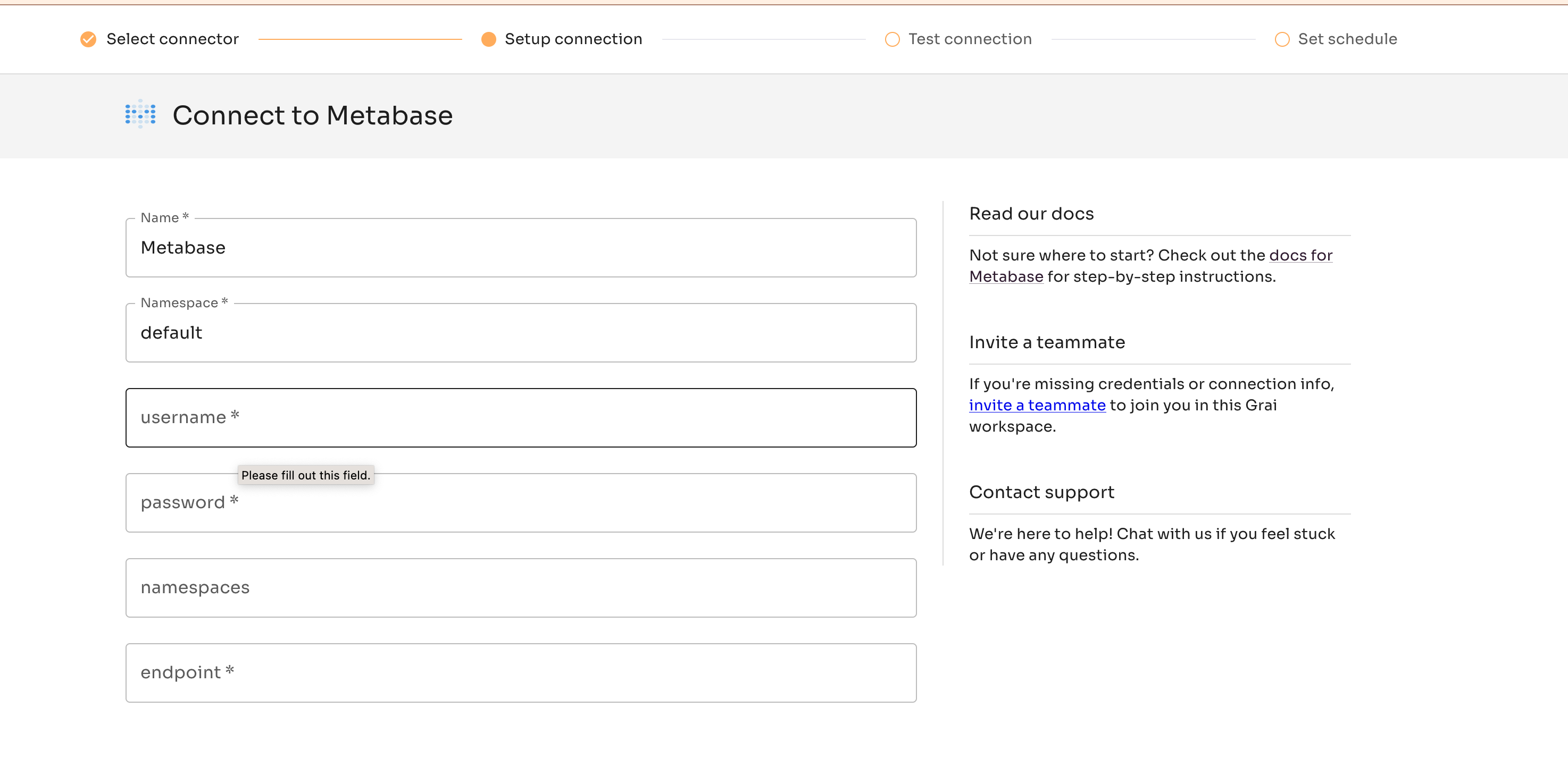Metabase
The Metabase integration synchronizes your Metabase Question metadata into the lineage graph. In this way you can quickly identify which data is being used by your BI tools, which data is not, and more.
Web App

Fields
| Field | Value | Example |
|---|---|---|
| source | The name of the source, see sources | my-source |
| Name | Name for connection | Metabase |
| Namespace | Namespace for the connection, see namespace | default |
| username | Username for an authorized Metabase User | |
| password | Password of the authorized user | |
| namespaces | An Optional JSON string (see below) | |
| endpoint | Endpoint of your Metabase instance | metabase.yourdomain.com |
Namespaces
If the namespaces field is not provided, Grai will create a default namespace for each databases on your behalf. You can always update the namespaces field later to customize your namespace organization.
Metabase stores a database id for every database it's configured to query from. In order to automatically tie your data lineage together, Grai needs to know which Grai namespace corresponds to each database id. The namespaces field should be a JSON string with the Grai namespace for each database id e.g.
{
"<database_id>": "<namespace>"
}Python Library
The Metabase integration can be run as a standalone python library to extract data lineage from your instance of Metabase.
The library is available via pip
pip install grai_source_metabaseMore information about the API is available here.
Example
The library is split into a few distinct functions but if you only wish to extract nodes/edges you can do so as follows:
from grai_source_metabase import MetabaseIntegration
from grai_schemas.v1.source import SourceV1
source = SourceV1(name="my-source", type="my-type")
metabase_params = {
"username": "my-username",
"password": "my-password",
"endpoint": "https://metabase.yourdomain.com"
}
integration = MetabaseIntegration(source=source, namespace="metabase", **metabase_params)
nodes, edges = integration.get_nodes_and_edges()